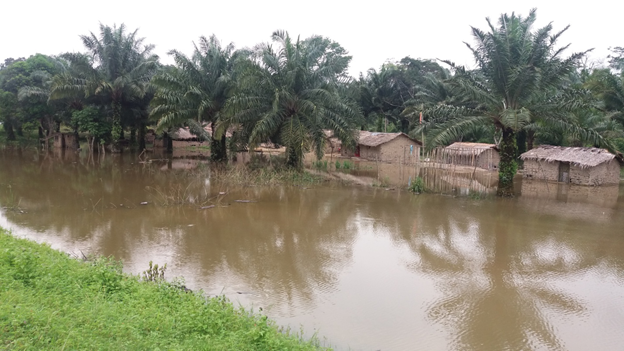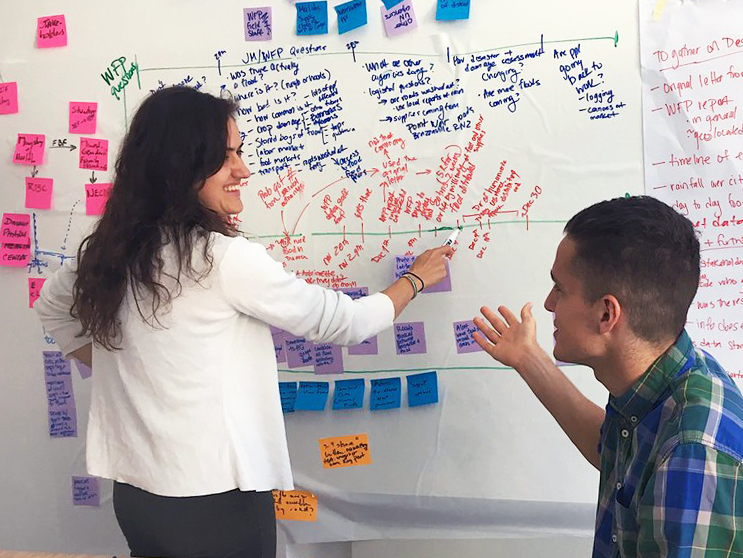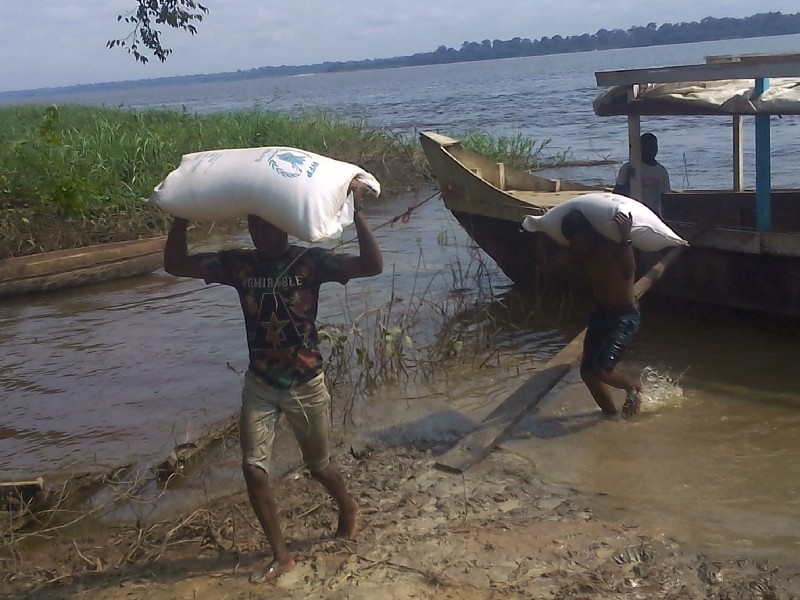This is where nature, technology, the business world and the humanitarian space meet.
In November 2017, the remote Congolese town of Impfondo experienced unrelenting rains that flooded vast areas of land and forced thousands of people to evacuate. An on-the-ground assessment showed extensive damage to food crops, homes, buildings and roads. The World Food Programme (WFP) along with other UN agencies, supported the government’s response by providing food to the most affected people.

Responding was a challenge, and determining needs took some guesswork. In the end, WFP barged life-saving food down the Ubangui river to reach 5,500 hungry people, and other agencies provided water treatment supplies, tarps and other essential items. Soon afterward, as the government started work on repairing the infrastructure, WFP started looking at solutions to ensure a faster response to this type of disaster in the future.
A deluge of ideas
This is where Cloud to Street came in. The New York- based group is a leader in remote flood mapping.
They use high-resolution satellite imagery to estimate local flooding exposure and to monitor its impacts in near real-time, providing essential, credible and detailed information to first responders. Cloud to Street’s approach is lighter than legacy flood mapping methods, which largely relies on complex hydrological surveys or manual mapping.

Because of the transformative nature of their work, WFP’s Innovation Accelerator offered to help Cloud to Street adapt their tools to humanitarian response. At their early June bootcamp with Google Launchpad, Cloud to Street and other teams went through a week of intensive, hands-on work. Bright, inspiring mentors from digital innovation helped people think through their strategies. WFP staff also attended, in order to provide the field perspective needed to ensure that projects
deliver value on the ground.
Finding a common language
Some moments at the bootcamp may have been initially jarring to the long-time humanitarian field worker: the mentors would tell teams about ‘users’ seeking ‘products’, and ‘markets’ that require tapping into. A few of these terms sounded a bit off to those of us based in the field who manage programs for people requiring an array of basic needs. Arriving at a common language helped innovators from the field better articulate their world and opportunity set.

Cloud to Street is now getting ready to ‘sprint’ and work on applying their solutions in WFP country offices. Here in Congo, WFP staff are curious about this new tool and look forward to receiving preliminary analytics at some point this year. We’re hoping to have better information on hand the next time flooding strikes.
In many respects, Congo — a well-connected, middle-income country grappling with a series of food and nutrition challenges — is a favorable setting to brainstorm and develop some of the innovations that are transforming crisis response globally.
Read more about WFP’s work in the Congo.


